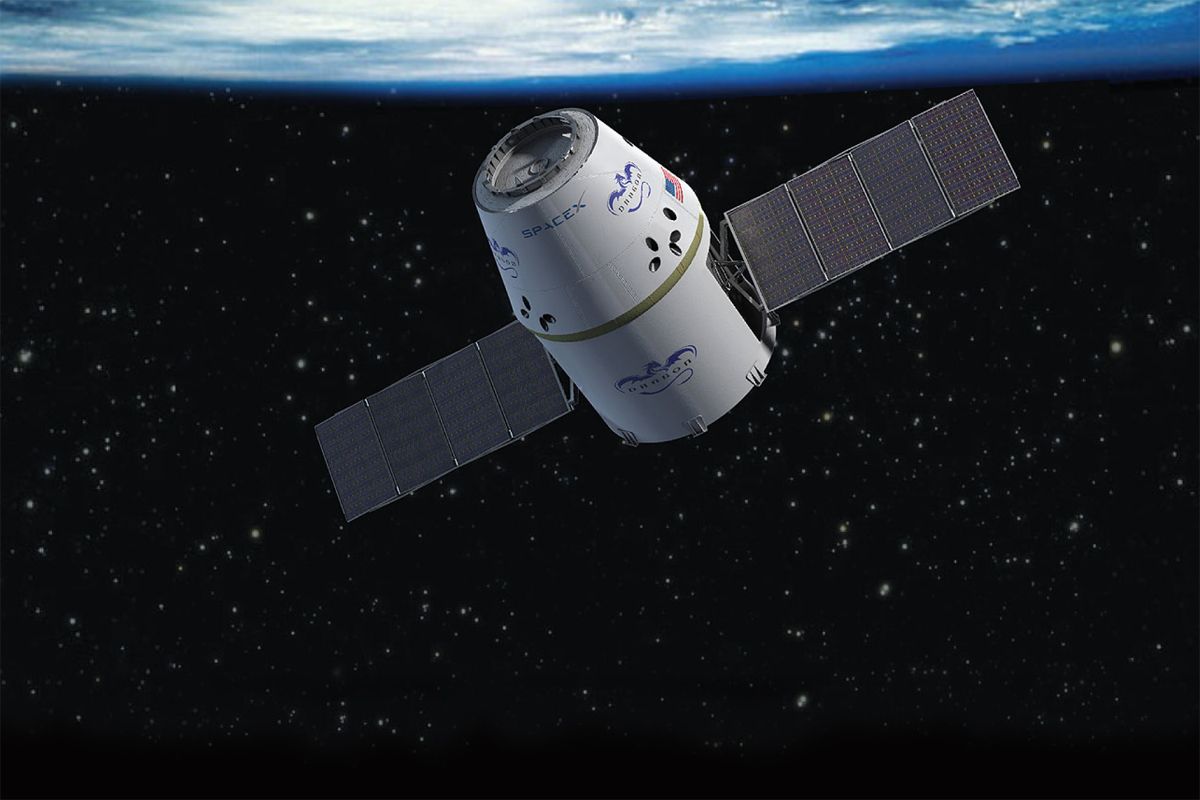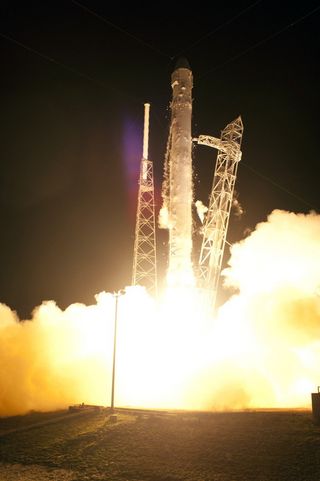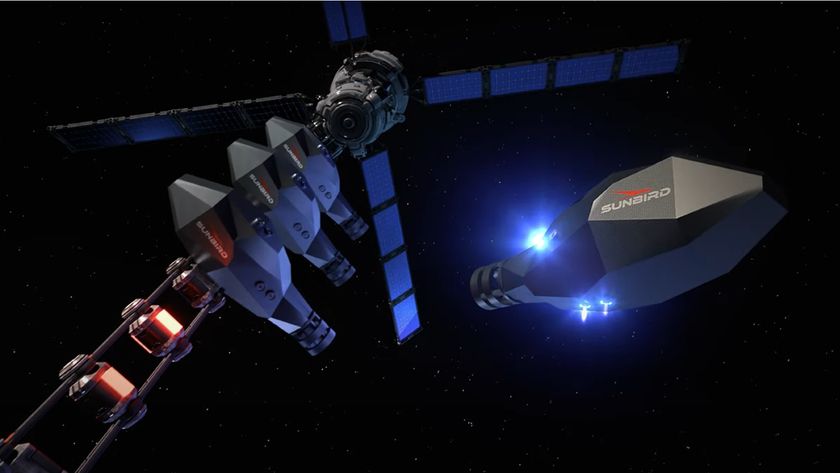How to See SpaceX's Private Space Capsule in the Night Sky

The private spaceflight company SpaceX successfully launched an unmanned capsule on a test flight to the International Space Station today (May 22), and there's a chance you can spot it in the night sky as it orbits overhead.
SpaceX's Dragon spacecraft launched from the Cape Canaveral Air Force Station in Florida early this morning, and will now spend the next three days chasing down the orbiting outpost. The unmanned space capsule is on a test flight to demonstrate its ability to fly commercial cargo delivery runs to the orbiting lab under a NASA contract with SpaceX.
"Sightings of the Dragon cargo craft before docking may be possible over your area," NASA officials announced in a skywatching alert.
The International Space Station is the largest man-made object in space, and can even rival the dazzling planet Venus in brightness. But even other smaller spacecraft, such as NASA's now-retired space shuttles and Russian Soyuz capsules have been spotted from the ground before. [Photos: SpaceX's Dragon Launches Into Space]
And Dragon is no exception.
NASA's SkyWatch website, which lists times and dates of spacecraft passes over major cities, has added the Dragon capsule to its list of spacecraft. In Los Angeles, for example, Dragon will fly overhead on Wednesday (May 23) at 2:55 a.m. and 4:27 a.m. PDT. New Yorkers will also get two chances on Wednesday to see Dragon when it passes over Manhattan at 2:50 a.m. and 4:23 a.m. EDT.
In Houston, home of NASA's space station Mission Control, the Dragon capsule will only be visible on Thursday morning at 4 a.m. EDT, according to NASA's guide.
Sign up for the Live Science daily newsletter now
Get the world’s most fascinating discoveries delivered straight to your inbox.
If all goes well, Dragon will approach and dock with the space station on Friday (May 25), merging into the brightness of the orbiting lab.
For more information on when and where to look from your hometown, check out these three websites:
Each will ask for your zip code or city, and will respond with a list of suggested spotting times. Predictions computed a few days ahead of time are usually accurate within a few minutes. However, they can change, so be sure to check frequently for updates.
Another good resources is Real Time Satellite Tracking, which shows what part of the Earth the space station and other spacecraft happen to be overhead at any given moment during the day or night.

SpaceX's Dragon capsule carrying just over 1,000 pounds of cargo to the International Space Station, but cannot dock itself at the orbiting lab. Instead, the capsule will fly near the station on Friday and allow astronauts aboard the outpost to grab it with a robotic arm and attach the vehicle to an open docking port.
The space stations' six-man crew is expected to enter the gumdrop-shaped spacecraft on Saturday. SpaceX plans to have the Dragon capsule return to Earth on May 31, when it is due to splash down in the Pacific Ocean and be retrieved by a recovery ship crew.
SpaceX has a $1.6 billion NASA contract to provide 12 Dragon flights to deliver supplies to the space station. It is one of several NASA contracts aimed at filling American space transportation needs now that the agency's shuttle fleet is retired.
Editor's note: If you snap amazing photos of the Dragon capsule in orbit that you'd like to be considered for use in a story or gallery, please send pictures and comments to SPACE.com managing editor Tariq Malik at tmalik@space.com.
This story was provided by SPACE.com, a sister site to LiveScience. Follow SPACE.com for the latest in space science and exploration news on Twitter @Spacedotcom and on Facebook.













